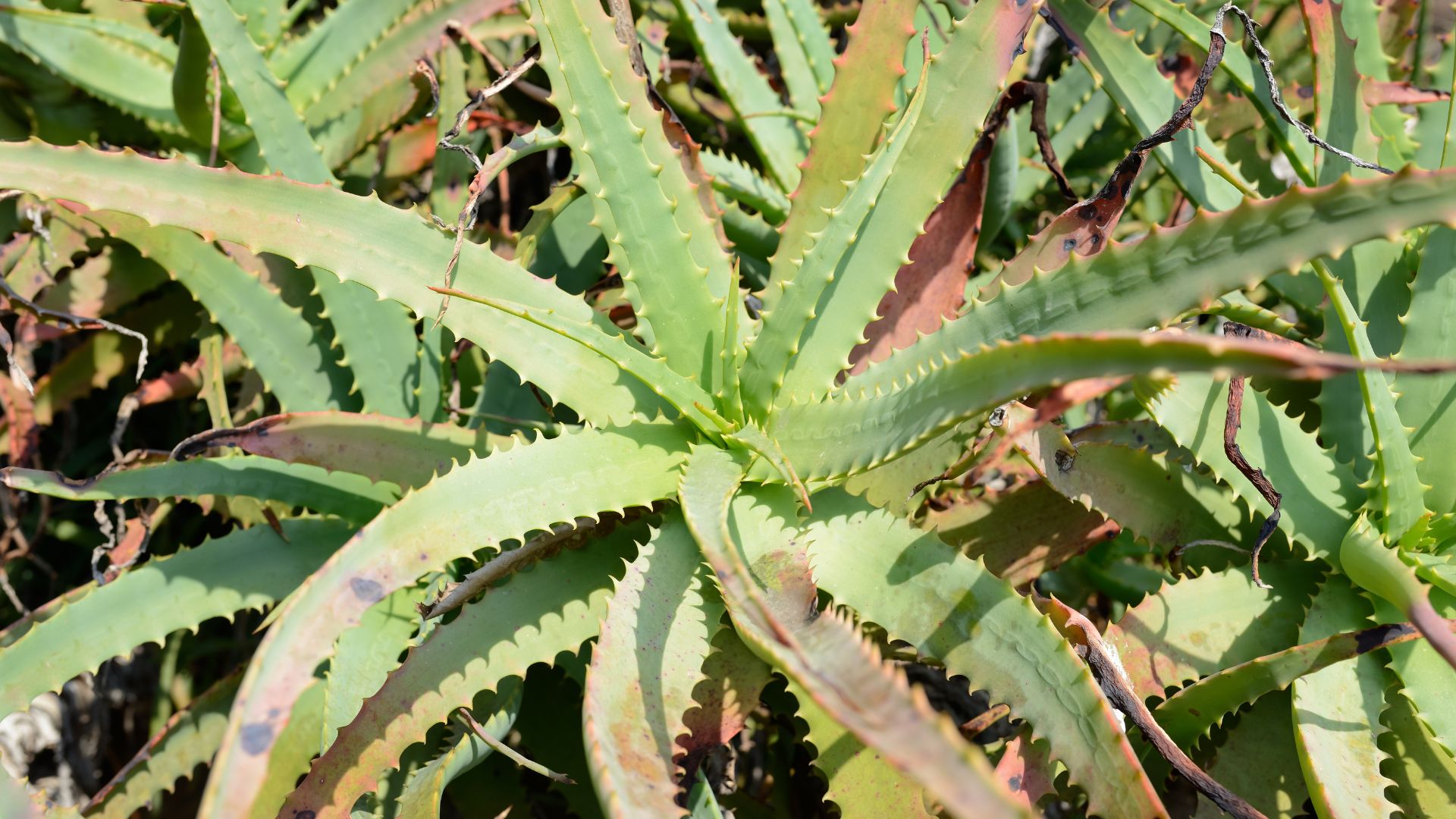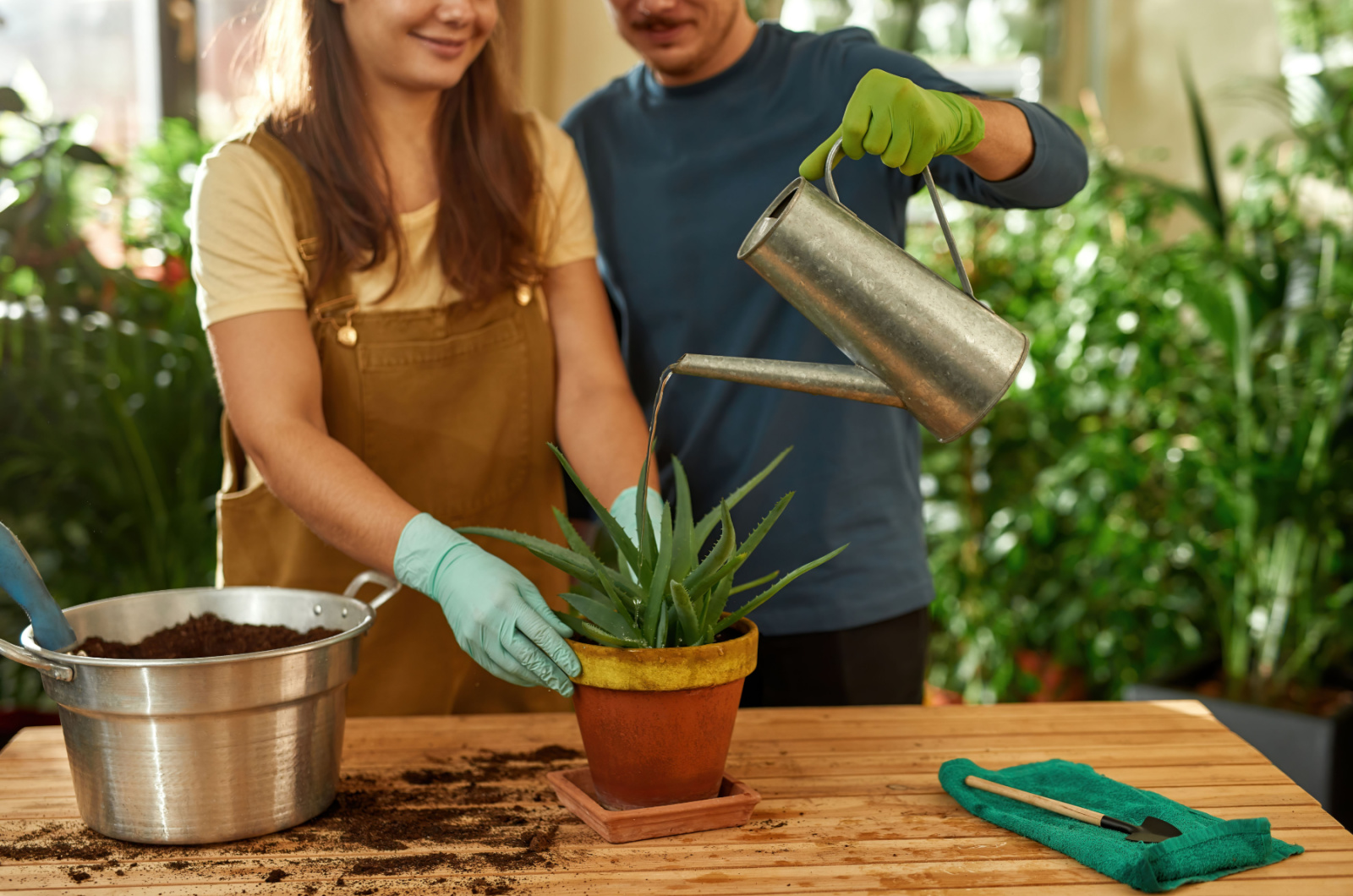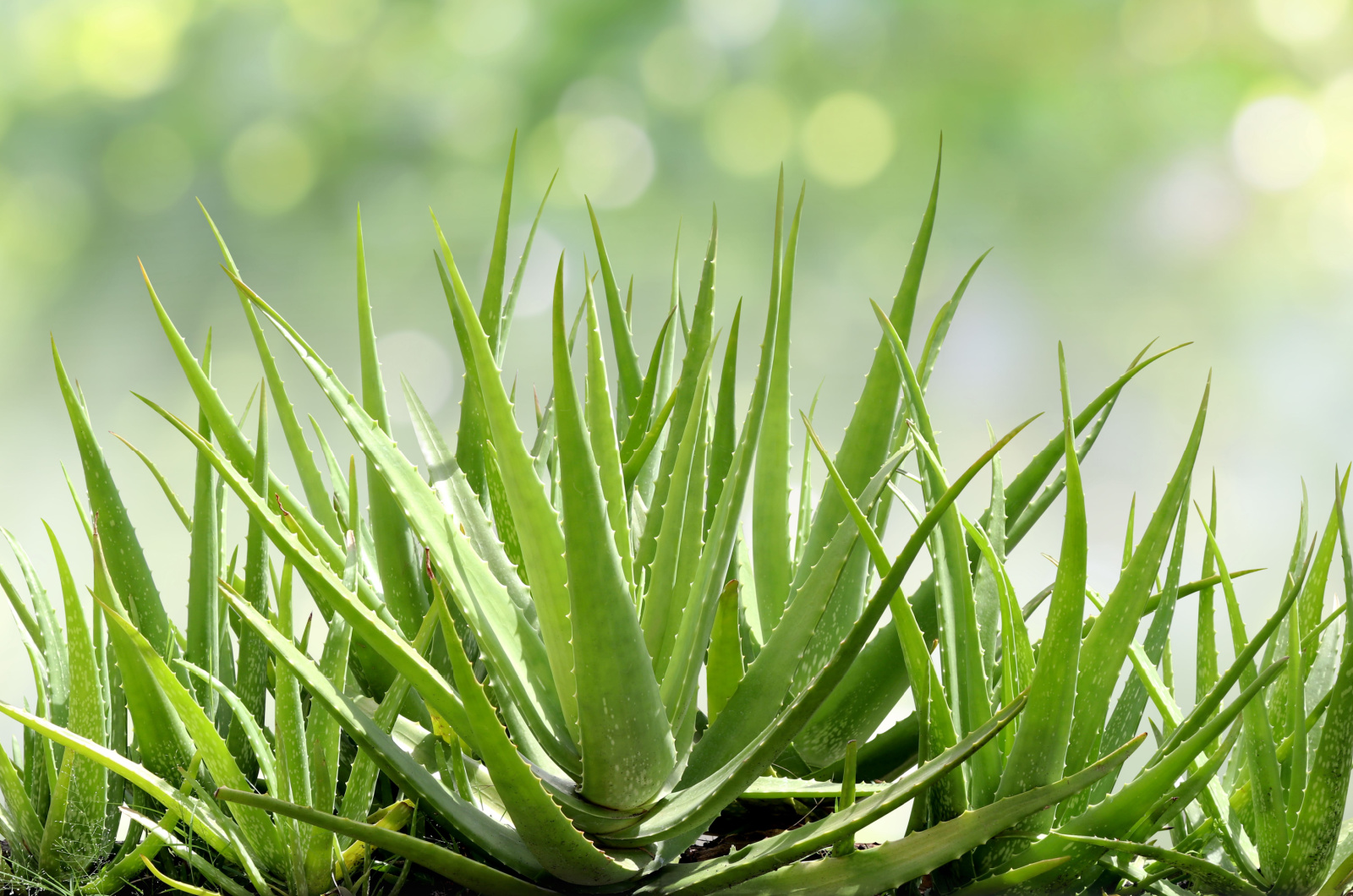Aloe plants are some of the easiest houseplants to care for, but even they can suffer from certain issues, such as unsightly brown discolorations.
The most common causes are too much or not enough water, surplus of fertilizer, and excess sunlight.
To make matters even worse, brown foliage won’t just go back to its usual color when you fix the issue. You’ll have to snip them off and make room for new growth.
Luckily, your aloe plant will recover in the right conditions and recuperate its health if you uncover the cause of its discoloration and deal with it quickly.
Let’s find out how to do it!
Over Or Underwatering
Common signs of an overwatered aloe plant include browning, yes, but also mushy stems, moldy and soggy soil, and, worst of all, root rot.
The best thing you can do is avoid this issue altogether by watering your aloe when it dries out and keeping it in a porous container with drainage.
But if you do overwater it, take your plant out of its current planter and examine its roots. Remove the mushy, brown, and black ones (together with all contaminated soil) and plant it in a clean planter and fresh potting mix.
Believe it or not, you can also deal with an underwatered aloe plant because, even though it’s a succulent, it still requires moisture.
You can distinguish this issue from overwatering by examining the foliage. If your aloe lacks water, its leaf tips and margins are the first parts that turn brown, before they curl inside and maybe even shrink.
To avoid this issue altogether, irrigate your aloe vera every 3 weeks or once you notice that soil has almost dried out. You should water it less frequently in winter because that’s when it enters dormancy.
Excess Fertilizer
If you’ve already taken inadequate watering into consideration and realized that isn’t the issue, you might be giving your aloe too much fertilizer.
These plants are low-maintenance, and just as they don’t need too much water, they don’t require plenty of nutrients.
Excess fertilizer causes salt build-up and root burn, which can impede your aloe vera’s ability to absorb water and nutrients, leading to a sickly brown color.
If this happens, you can flush your soil with plenty of distilled or rainwater, or repot your aloe in a fresh mix without adding any fertilizers for the first couple of months.
And if the roots have been damaged, just snip them away and your plant will quickly perk back up.
Use a succulent and cactus fertilizer, feed it only twice a year (in spring and summer), and repot it every 2-5 years in order to replenish the soil and avoid salt build-up.
Too Much Sunlight
Finally, if you notice your aloe is browning, it might be because of too much sunlight.
Common signs of sunburnt aloe vera are similar to those of underwatering, although the leaves first turn pale, then yellow, and only then obtain a brown color.
They will start to curl and the soil will dry out way too fast, meaning you’ll have to move your plant to a more secluded area.
Morning and late afternoon direct sunlight are perfect, but if you don’t have a window that gets this kind of light exposure, just move your plant a couple of feet away from your brightest window. You should also water it deeply to help it recover and remove the sunburnt leaves because they won’t get their color back.



